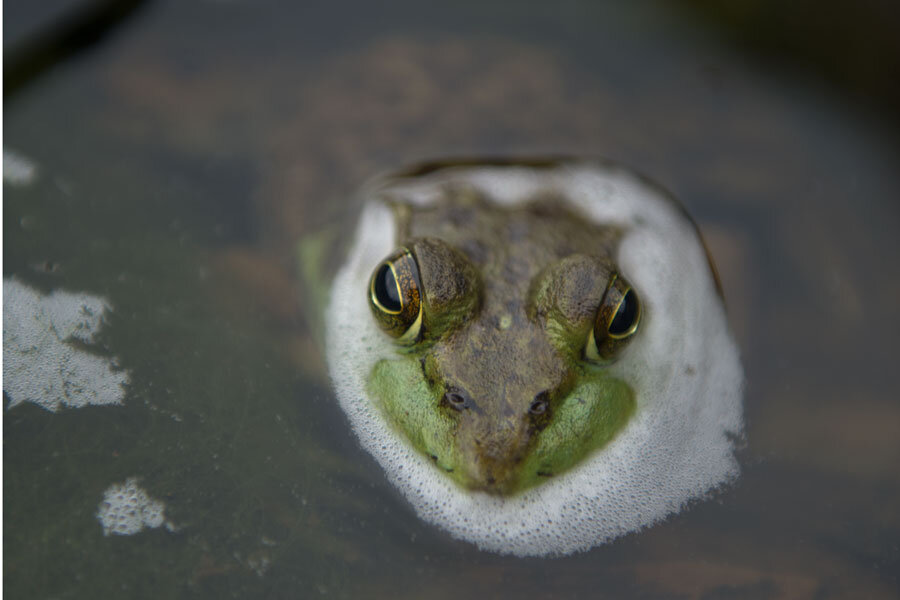All the single ladies? Study finds decrease in male frogs
Loading...
A study has found that the proportion of female frogs in suburban lakes and ponds is directly correlated to the level of development in the surrounding area.
The study, released Sept. 7, was published by Yale University researcher David Skelly and Ph.D. student Max Lambert in the journal Proceedings of the National Academy of Sciences.
Dr. Skelly and Mr. Lambert sampled frogs from 21 different ponds in Connecticut, controlling for all variables except for local landscape development. Their studies revealed a varying sex ratio: suburban ponds held a higher proportion of female frogs and forest ponds held a higher proportion of male frogs.
Specifically, 60 percent of frogs in forest ponds were born male, and some suburban ponds had double the amount of female births.
Not only did suburban lakes have more female frogs, but a large percentage of the male frogs present had characteristics of female reproduction.
Previous studies by Skelly and his team of researchers have proved that female frogs develop “intersex” or hermaphroditic traits in suburban waters, such as testicles containing female eggs.
Although a strongly supported theory in the past, Skelly finds little data to support the correlation between synthetic estrogen, such as excreted waste containing birth control pills, and the intersex changes in these frogs. Instead, Skelly and his team argue that this skewed gender ratio is caused by a less-assuming factor: landscaping.
When maintaining lawns, humans remove native plants and input endocrine disruptors, present in common herbicides. Atrazine is the most commonly used herbicide in the US, and agricultural runoff can input endocrine disruptors into suburban ponds at several parts per million.
“The observation that the amount of landscaping is having a quantitative effect on the sex determination and population biology of frogs in a nearby pond is amazing,” said Brad Shaffer, director of the Shaffer Laboratory at UCLA, a facility that studies ecological and conservation theory.
Along with herbicide chemicals, higher levels of clover are integrated with grass to keep suburban lawns green. Clover contains a high concentration of phytoestrogens, the plant version of estrogen. Higher concentrations of clover means higher concentration of plant estrogen into suburban ponds, skewing the local frog sex ratio.
By altering the number of females naturally born, and then transforming a proportion of natural males into hermaphrodites, Skelly says that landscaping chemicals are now changing how scientists understand gender ratios in amphibians.
“This is an extremely important study that should make us all think about the collateral damage of suburbanization to natural ecosystems,” said Dr. Shaffer. “Amphibians are very sensitive bioindicators, and this shows that [suburbanization] has profound impacts on the life history of a common, seemingly resilient species of frog.”







